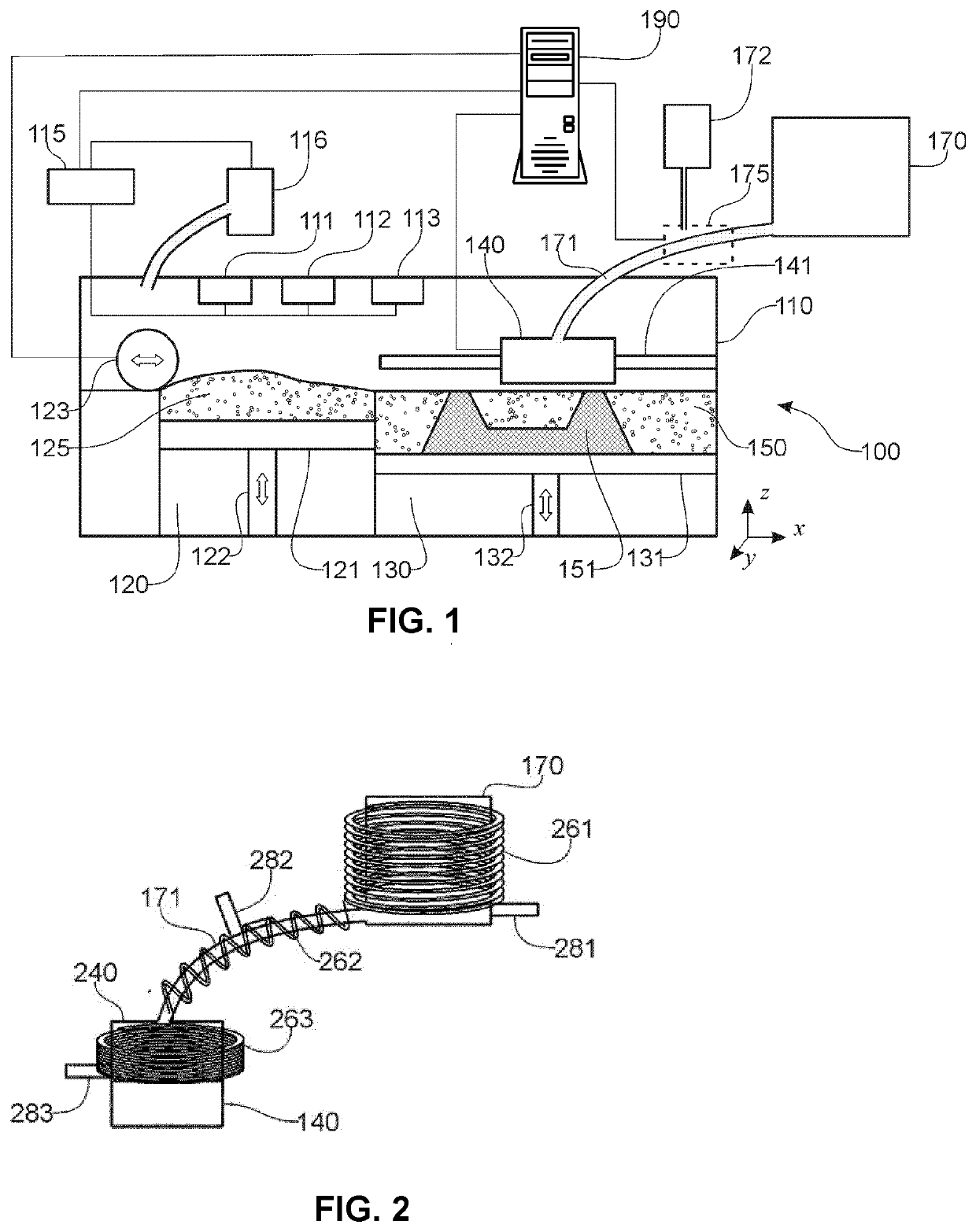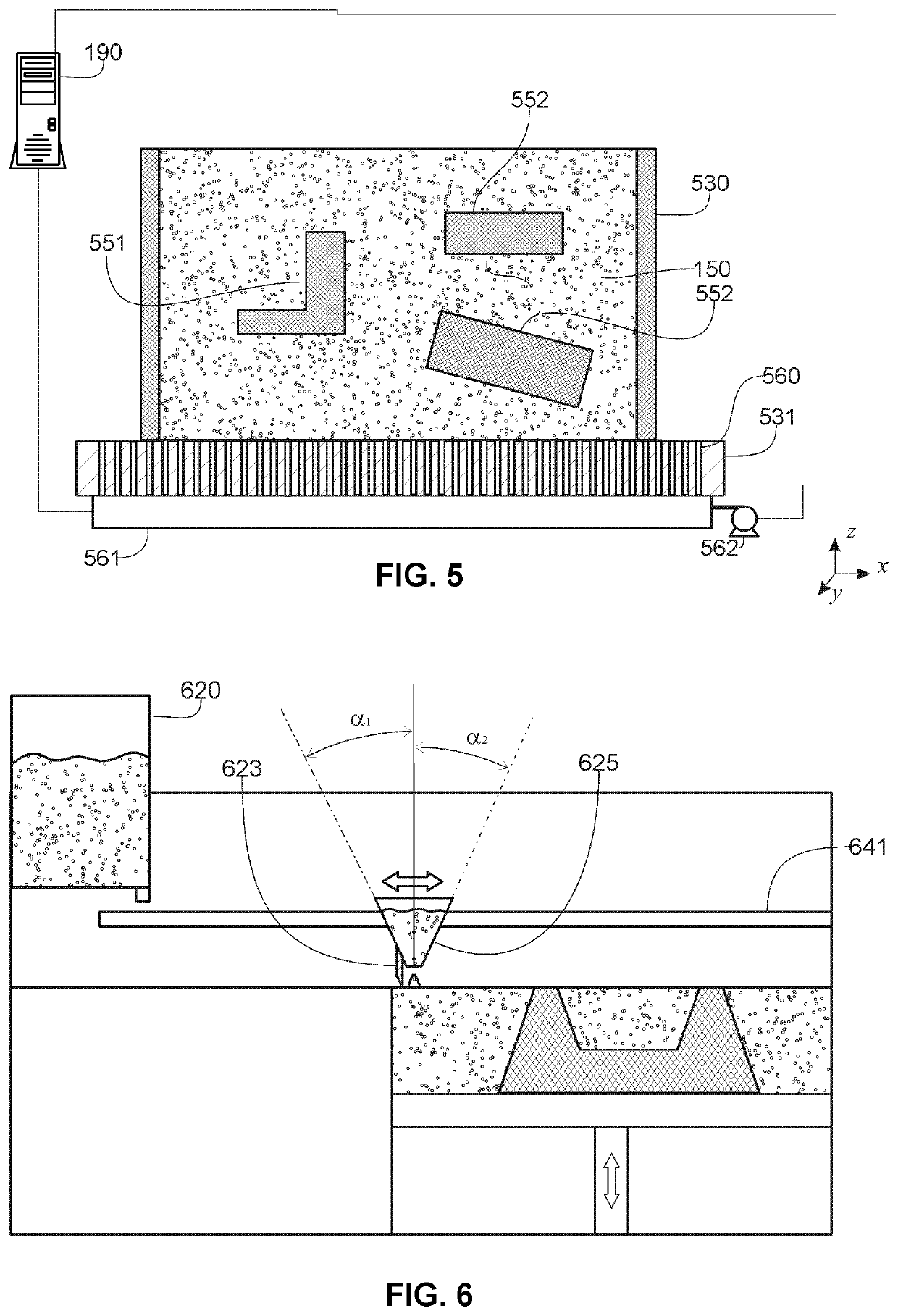Method and device for additive manufacturing by agglomeration of a granular material
a technology of additive manufacturing and granular materials, which is applied in the direction of manufacturing tools, foundry patterns, moulding apparatus, etc., can solve the problems of carbon dioxide emission and defects in molded parts
- Summary
- Abstract
- Description
- Claims
- Application Information
AI Technical Summary
Benefits of technology
Problems solved by technology
Method used
Image
Examples
Embodiment Construction
[0061]FIG. 1, according to an exemplary embodiment, the device (100) of the invention comprises a closed chamber (110) containing a controlled atmosphere in particular in terms of composition and temperature.
[0062]A plurality of sensors, placed in said chamber, allows to measure, for example, its temperature (111), hygrometry (112) and the ratio of CO2 (113). The nature of the atmosphere in the chamber is determined by the nature of the sand used and the nature of the inorganic binder, so as to ensure an easy spreading of the sand and its rapid agglomeration in the zones put into contact with the inorganic binder.
[0063]As an example, the atmosphere comprised in the chamber comprises 60% humidity and is brought to 20° C. for a CO2 content of around 0.04%.
[0064]These conditions are used for the implementation of the method of the invention with an inorganic binder of Na2SiO3 type.
[0065]According to another embodiment, the temperature of the chamber is brought to a temperature of 80° C...
PUM
| Property | Measurement | Unit |
|---|---|---|
| temperature | aaaaa | aaaaa |
| temperature | aaaaa | aaaaa |
| viscosity | aaaaa | aaaaa |
Abstract
Description
Claims
Application Information
 Login to View More
Login to View More - R&D
- Intellectual Property
- Life Sciences
- Materials
- Tech Scout
- Unparalleled Data Quality
- Higher Quality Content
- 60% Fewer Hallucinations
Browse by: Latest US Patents, China's latest patents, Technical Efficacy Thesaurus, Application Domain, Technology Topic, Popular Technical Reports.
© 2025 PatSnap. All rights reserved.Legal|Privacy policy|Modern Slavery Act Transparency Statement|Sitemap|About US| Contact US: help@patsnap.com



